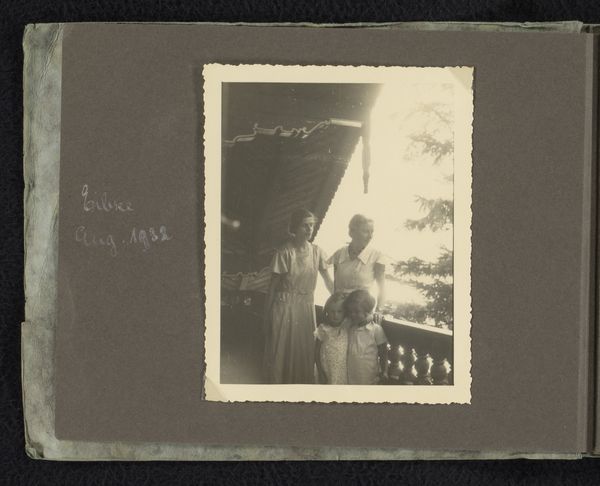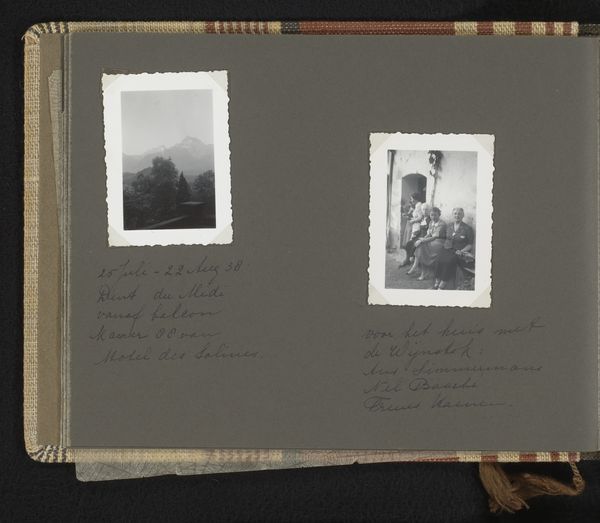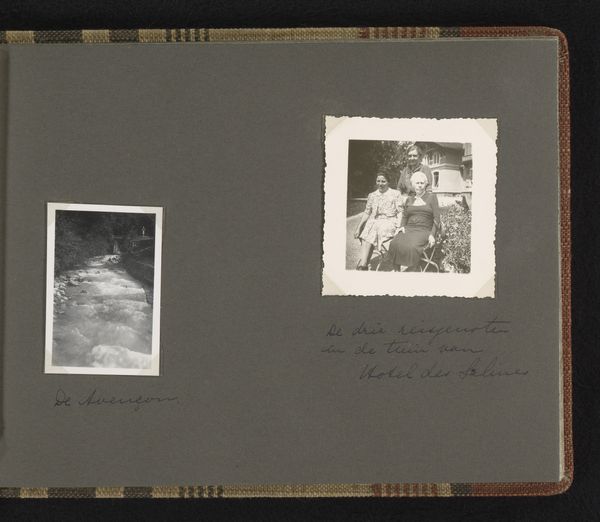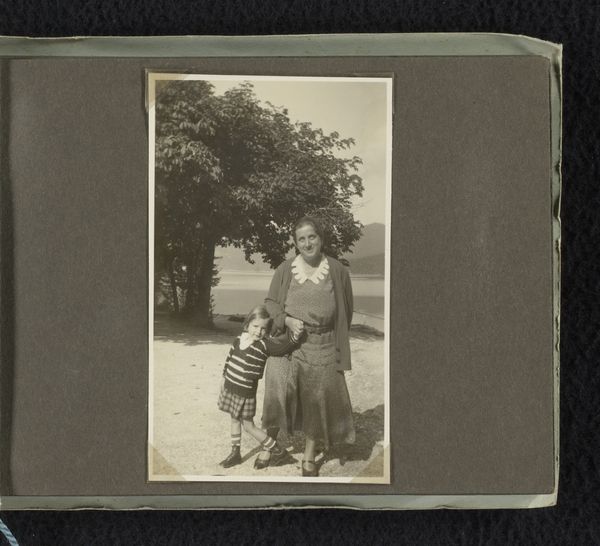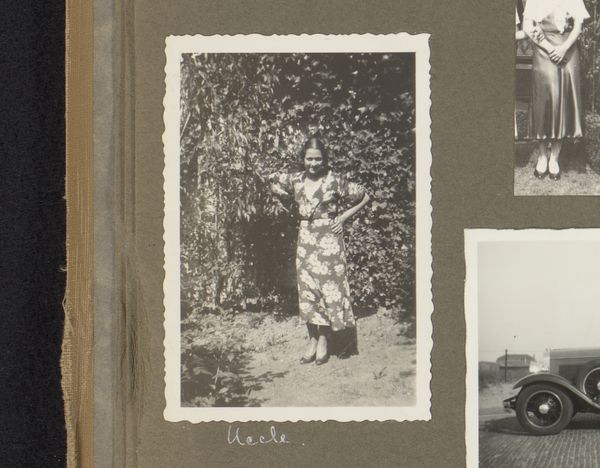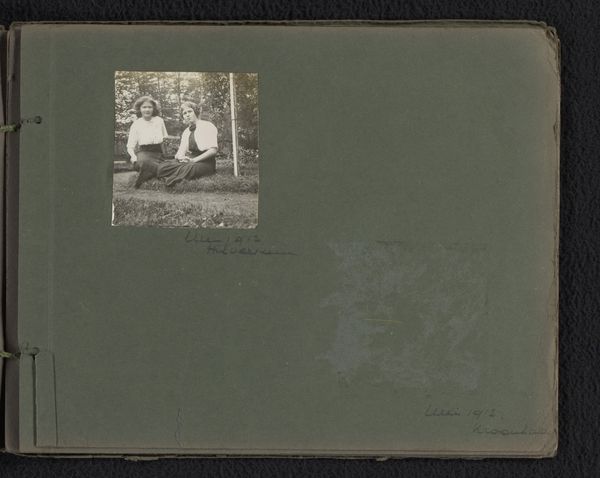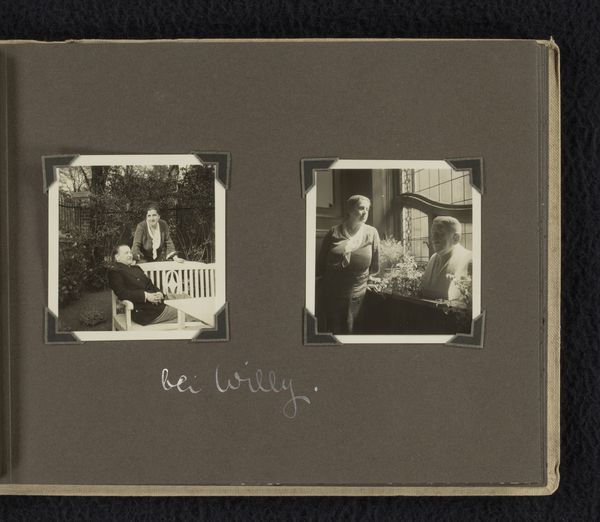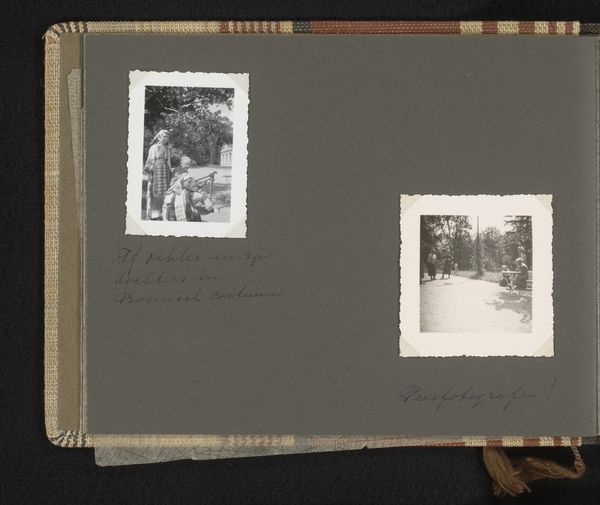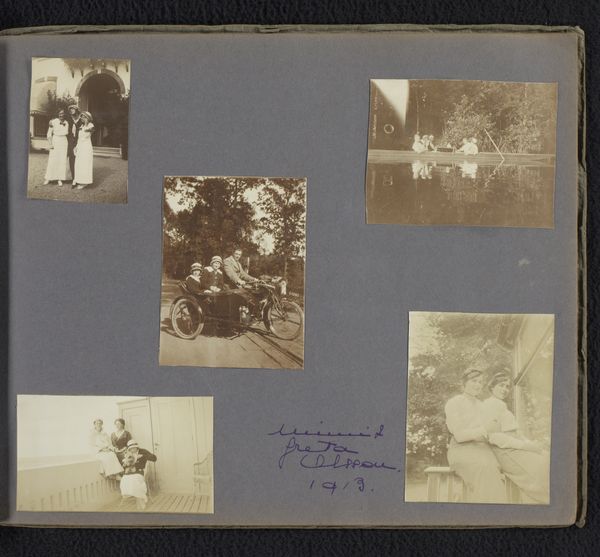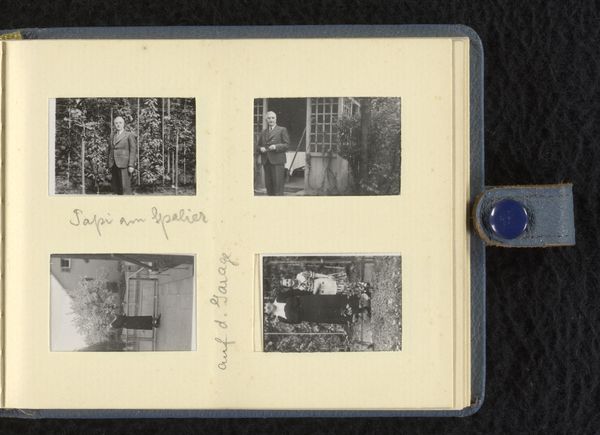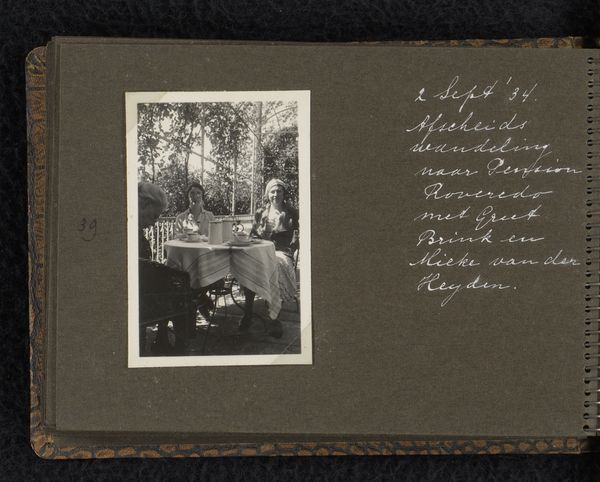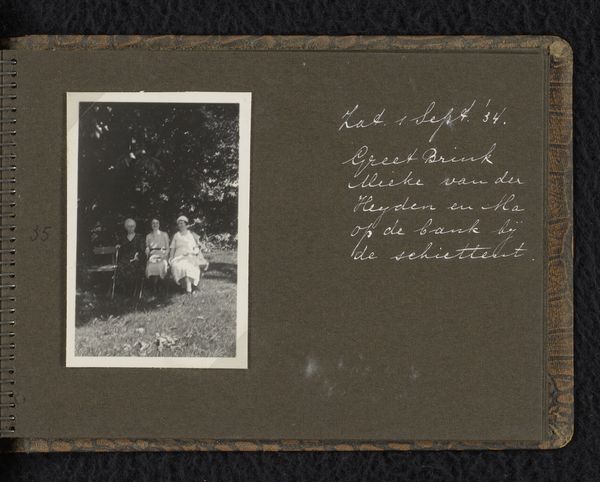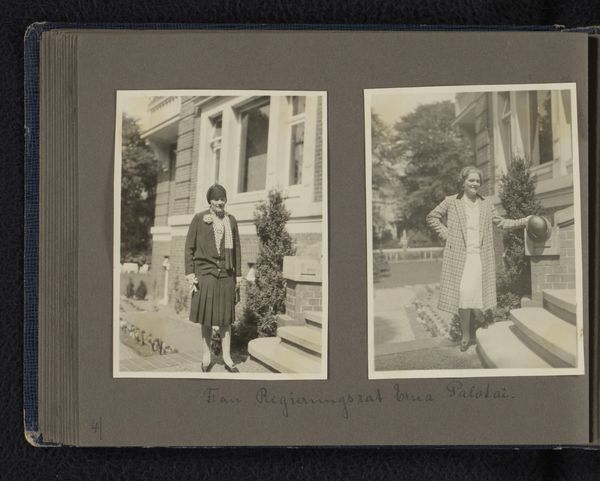
Mathilde Wachenheimer-Wertheimer in de tuin met haar kleinzoon Klaus Zürndorfer, augustus 1935, Duitsland/Stuttgart? 1935 - 1938
0:00
0:00
Dimensions: height 90 mm, width 60 mm, height 165 mm, width 235 mm
Copyright: Rijks Museum: Open Domain
Curator: This is a fascinating photograph titled "Mathilde Wachenheimer-Wertheimer in de tuin met haar kleinzoon Klaus Zürndorfer, augustus 1935, Duitsland/Stuttgart?". It's a gelatin silver print, a seemingly simple portrait taken in a garden. Editor: The tonality is so evocative! The dark shades and textures contrasted with areas of high definition creates such a potent visual impression. There's something quietly arresting about its geometry too, the formal uprightness... almost defiant. Curator: That visual "defiance" speaks volumes, especially when we consider its context. Taking place in Stuttgart between 1935 and 1938, the rising Nazi regime loomed. A Jewish woman, Mathilde, photographed with her grandson... the act itself becomes an act of resistance. It is powerful within that socio-political framework of displacement and resistance to erasure. Editor: Exactly! Observe how the verdant setting, teeming with vegetation, nearly engulfs the figures, as if threatening to destabilize them. Also the visual impact of the subjects’ clothing – such an exercise in balancing darks and lights, that creates an unsettling visual disequilibrium. Curator: I think that instability translates beautifully in the staging of identity as well. While realism permeates the photograph’s presentation, the photograph refuses to be read as purely representational. Instead it emphasizes the significance of this quiet moment, highlighting the crucial details of identity during persecution and challenging us to remember it. Editor: True. It's fascinating how such understated formalism conveys so much meaning. The stark contrast between the figures and the environment amplifies, rather than softens, the core image and underscores the relationship's essence. The eye gravitates to details that become a story: subtle tension, a moment caught in time. Curator: I believe it's an immensely moving image. By analyzing this family's history and placing it in dialogue with that period, we acknowledge the power photography has in representing marginalized people’s fight to self-definition, resistance, and self-preservation. Editor: Agreed, and reflecting on its compositional power makes the picture even more emotionally resonant. Thank you for framing the artwork for us in such a rich context.
Comments
No comments
Be the first to comment and join the conversation on the ultimate creative platform.
